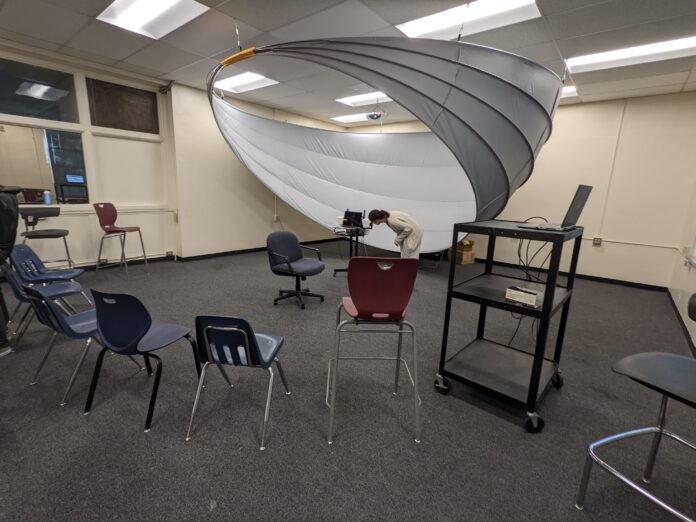“Common good” is made of many things. Equal education in public schools. A healthily involved community. Policy decisions informed by the needs and values of those they affect. At the Digital Public Participation (DPP) lab, design and technology hope to be a step towards these common, social goods.
The DPP lab is one of many projects by OSU DESIS, an organization of faculty and students passionate about design as a tool for social innovation and sustainability. After several years of pandemic disruption, the lab found a home in 2022 inside of Dominion Middle School, a Columbus city school less than a mile from OSU campus.
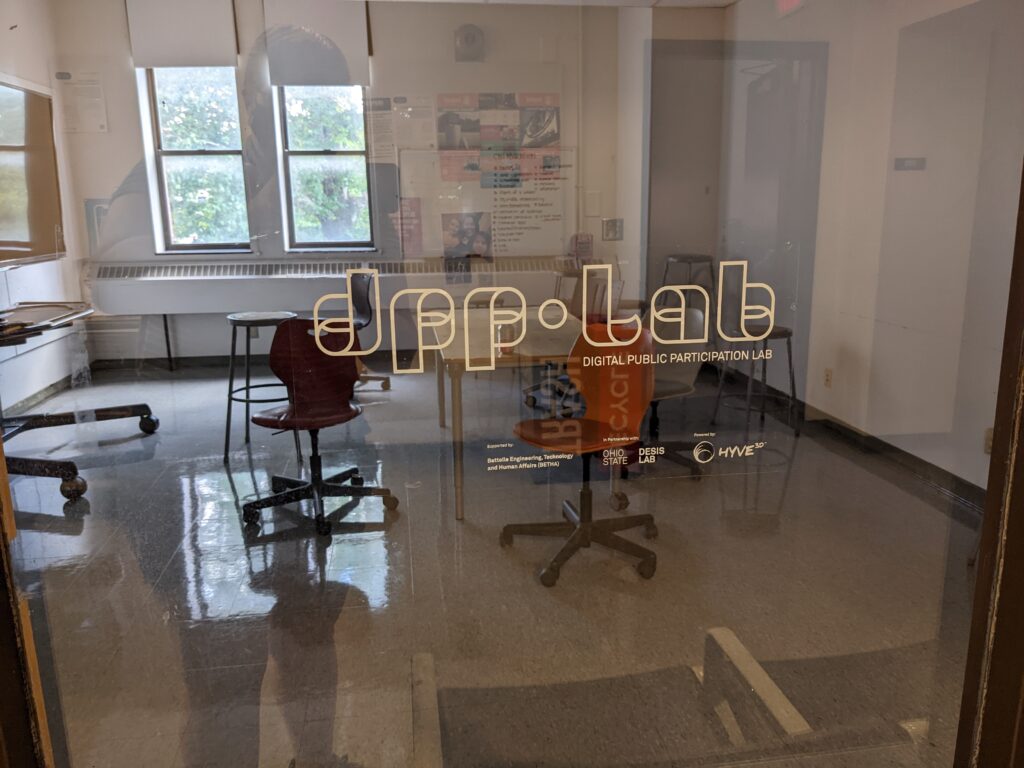
The DPP is planned to be made a work space, outfitted with current and developing technologies and opened to the public. Community groups will have the opportunity to reserve the room and use its equipment for their own projects. DESIS principal faculty member Sébastien Proulx intends the space for something else, as well. A design research project, he plans to work with community leaders and policy-makers to test the lab as a way to interface more deeply with those they represent. Through technology and open conversation, he believes, appointed and elected leaders could perform better research with the public about community decisions, allowing them to give direct input to social projects.
The Dominion Middle school location is ideal for achieving these goals, too, says Proulx. A location on the Ohio State University campus might make sense, but it could also alienate users. A university, as much a part of the community as it is, can be intimidating in its exclusivity and status as high academia. The middle school, in contrast, is familiar and welcoming as a community space.
An additional opportunity arises, by partnering with Dominion: the DPP lab as a classroom. In trade for housing the lab inside of the school, teachers and students will have access to the equipment and space for learning.
The first technology to be installed in the space has been the Hyve-3D— a gray, 5 meter in diameter, fabric half-dome, suspended from the ceiling at one end of the room. This striking object is a virtual reality projection system. Using a laptop, mirror, and the shape of the dome, it immerses users in a believable virtual space without the use of headsets. In one mode, it is a theater for 3D video. With the added use of one or more iPads as controllers, it also features a unique 3D sketching software. Its low fidelity, collaborative sketching process allows for to-scale visualization and ideation in a small amount of time. The technology is still developing, but it is innovative and has many uses.
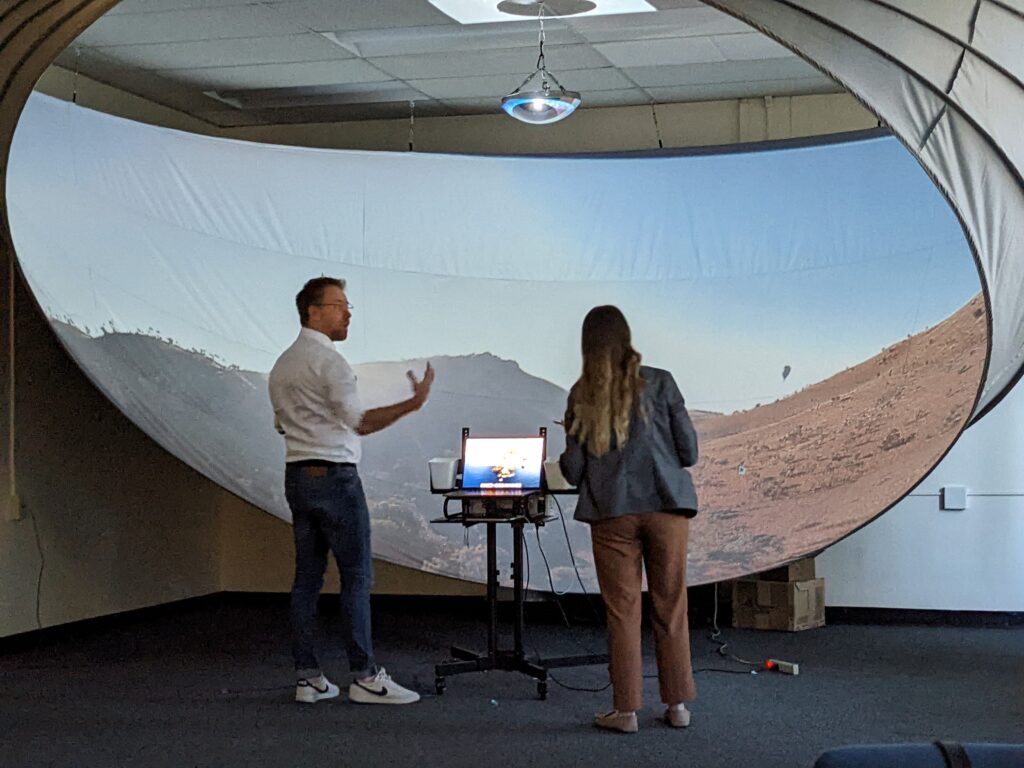
These are the goals to which the DPP lab project strives– being a unique, multifaceted program and makerspace– and some of the technology with which it will do so. DESIS and middle school officials have plans for its development. The problem left to address? The opportunity for me and other design students to come into this project? Furnishing.
As it stands now, the room is almost entirely empty. A scattering of well-worn, extra school chairs and one desk have been left in the room. The Hyve-3D is a large, central feature that is installed semi-permanently. It has nothing else, yet. But what furniture does it need, to transform from a room into a working lab? To prepare myself to tackle this design problem, I had the opportunity to perform a variety of research activities.
For the teachers and middle-school-aged users, the DPP lab has a lot to offer. Virtual reality has been found to be an excellent teaching tool for visual and tactile subjects (American University), increasing student engagement and retention of information (University of Maryland). In VR, constructed simulations or footage of far away places can give students the experience of a field trip without ever leaving school. Distant cultural experiences can be explored in the classroom with more detail. Natural places, plant life, and animals that students would never get to see can be observed as if they are right in front of you. Exposure to this technology in general prepares kids for the technologies of the future, and it inspires their creativity.
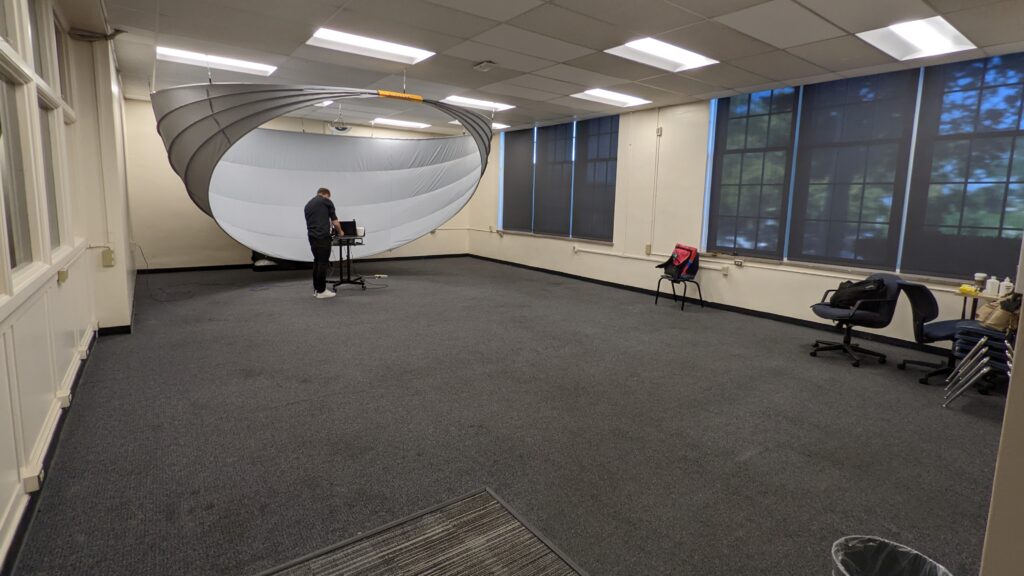
With the benefits and opportunity of VR for middle school students established, my eye turned to studying classroom design. In one report from University of Salford Manchester, the physical characteristics of classrooms were found to account for around 16% of variation in young students’ learning progress, meaning that careful design of these physical characteristics really matter. Naturalness, stimulation, and individualization were the three categories of qualities with impact, with individualization making up about a quarter of this impact.
One way that teachers have attempted to introduce greater levels of individualization in their classrooms is through flexible furniture. This movement finds that students from many age groups benefit from the ability to move more freely in the classroom, as well as make decisions about their preferred learning environment. With the use of wobble chairs, rocking stools, balance balls, standing desks, and more, many teachers have found students focusing better when given the ability to choose to move in their spot as they work, venting extra energy while still completing their math problems. Offering a choice between multiple of these non-standard options introduces greater autonomy to students, as well as changing the relationship they have to their classroom. In one Pennsylvania 7th grade classroom, a flexible furniture classroom overhaul led to fewer distractions from learning. Connecticut 2nd grade teacher Melissa Sciarretto says her students collaborate more often in this setup, too. “When they look up, they see another kid, and so I think they naturally started going to each other for help from there” (Iasevoli). These stories of such positive outcomes from flexible furniture ask us to reconsider how classrooms can best suit their students.
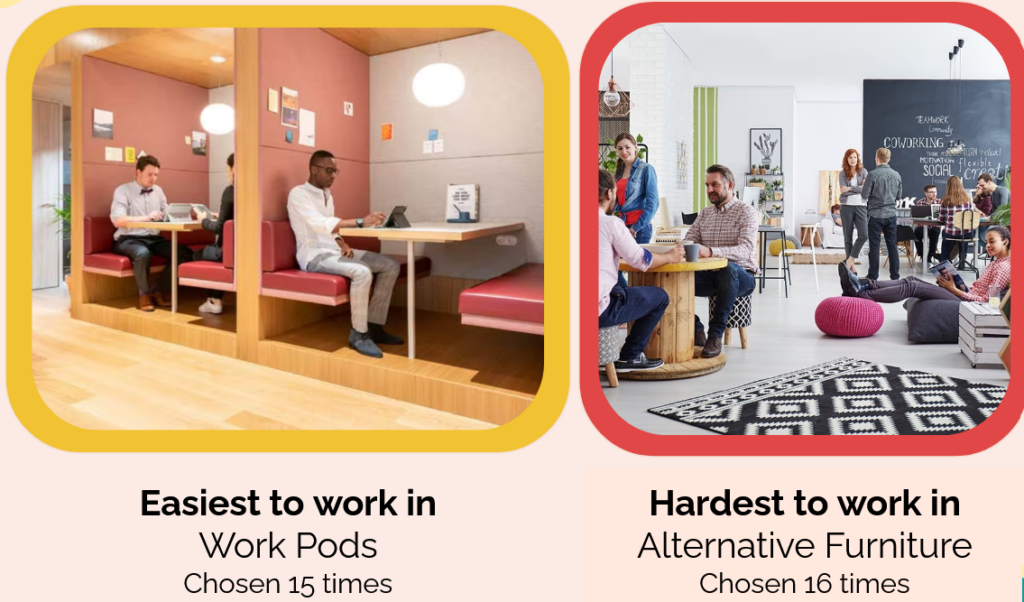
Yet, what works fantastic for young students can be detrimental for adult users, and the DPP lab must accommodate both. Certainly the physical needs of children are different– balance balls in class may be fun for them, but many adults would find them painful and unusable– but our working styles change as we age, too. In the course of my research, I created a survey to ask a variety of adults about their needs in a working space. 28 respondents later, the results were clear. When offered pictures of many types of work spaces, the flexible furniture office was chosen the most frequently, by 16 respondents, to be among the least usable. Individual and enclosed spaces, however, were quite popular. Working pods and cubicles both made it into the top three of most frequently chosen good working spaces. For students who need to be instructed, and for people of any age completing collaborative work, though, this furniture might not be ideal.
Further research, including a codesign activity with OSU students who could be real users of the DPP lab, yielded more insight into the needs of adult users. When prompted to design an ideal makerspace in the floor plan of the lab, codesign participants gravitated toward creating several zones of activity. The HYVE was a key limitation on space, but its dome easily made up a contained area in which to interact with it. Several participants placed chairs around a TV in the room to be available for online meetings or digital presentations. Some participants split working spaces in two, specifically designating one table as collaboration space and others as individual focus zones. Collab tables included standing desks and stools as chairs and were more frequently large, round tables. Individual work space was more frequently square and made up of comfortable lounge or office style chairs. When generating floor plans during the session, both groups of participants included lounge areas made up of comfortable large chairs or couches.
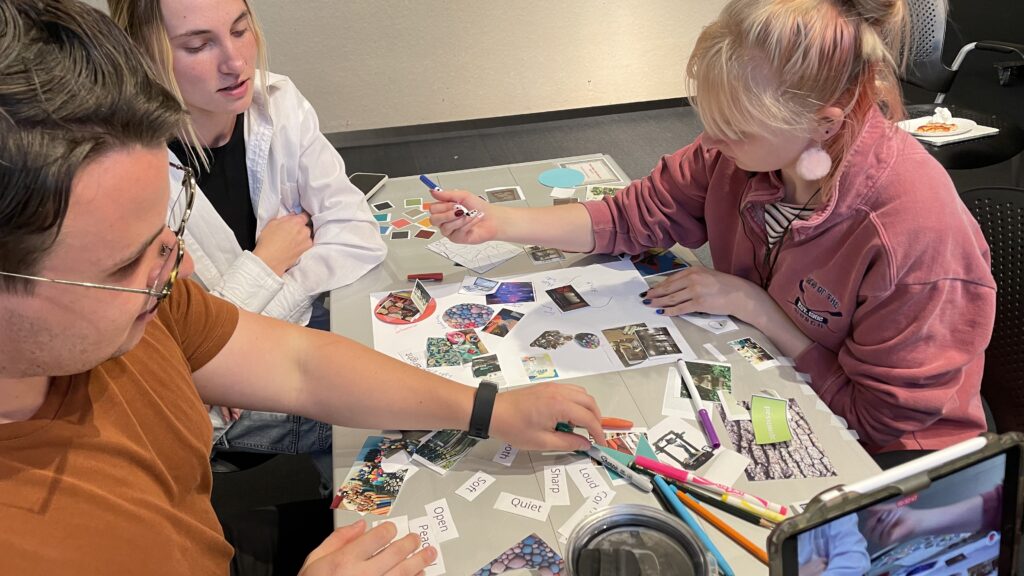
Looking at the design of commercial membership-based coworking spaces, these needs and space patterns hold true. Similar amenities exist in these spaces, save for specialized technology that participants stated they’d want to use in the lab, like 3D printers and light tables. Harvard Business’ analysis of the success of workers in coworking spaces found that a roughly 1:1 ratio of solo and group work areas was ideal. The sleek conference rooms and working nooks of coworking spaces are highly inspiring for what the DPP lab could be. And yet, this vision looks quite different from the lab as a classroom.
What is needed in the DPP lab is furniture that works for all of its users, allowing it to fulfill its goals. Just as adults and children need different sized furniture, the furniture which would best support the work of adult community members does not seem to be the furniture which would best support Dominion middle school students. Flexible furniture is a promising new development in classroom design, promoting focus, collaboration, and choice for students, but it is not liked nor needed by adults. The most effective adult working spaces may feature multiple kinds of furniture, affording both individual and collaborative work, but are not typically as explorative as classroom spaces are. For the DPP lab to work best for all of its users, it must be furnished thoughtfully. I propose that design which allows the lab and its furniture to transition into a different form for different uses is needed. Furniture which is modular or space saving exists, but none for this purpose: attempting to create a hybrid middle school classroom and office / makerspace.
The digital public participation lab is a project attempting to serve a specific Columbus community, but this makes it no less impactful. There is great potential in the development and research to be done, and the goals it strives to accomplish. My part in this project, attempting to design the room and some of its furnishings, is a step towards the potential social good of the DPP, as well as an experiment in furniture and modular design.

